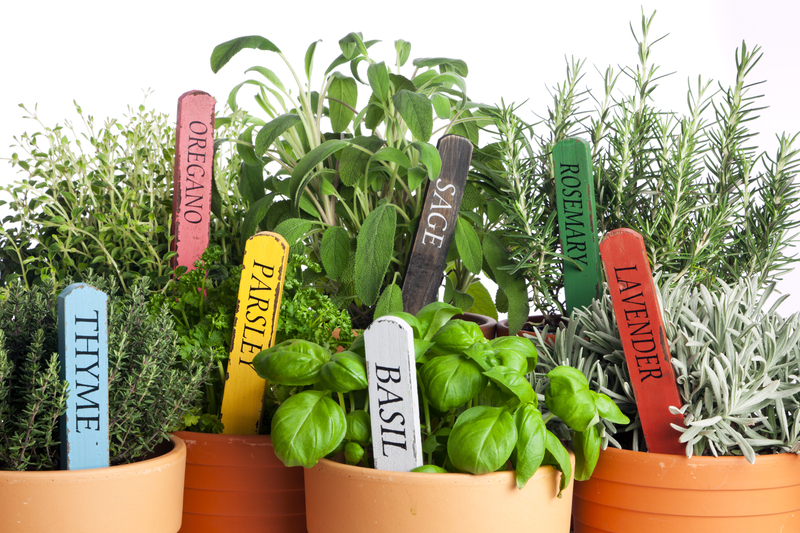Sustain Your Garden's Health Through Rough Weather
Posted on 23/08/2025
Sustain Your Garden's Health Through Rough Weather
Gardening is a labor of love, but nature's unpredictability can test even the most dedicated green thumb. From searing summer droughts to unexpected frosts and stormy downpours, rough weather can threaten your painstakingly cultivated garden. Fortunately, with the right knowledge and timely action, it's possible to protect your plants and sustain your garden's health through rough weather. This comprehensive guide explores essential strategies, tips, and best practices to help you safeguard your outdoor sanctuary--no matter what nature throws at you.
Understanding the Impact of Extreme Weather on Your Garden
Before diving into solutions, it's crucial to understand how various extreme weather conditions can impact your garden. Different types of inclement weather bring unique challenges that require tailored responses:
- Drought: Extended dry spells can cause water stress, wilting, stunted growth, and even death in sensitive plants.
- Heavy Rain & Flooding: Excessive moisture can lead to root rot, nutrient leaching, and soil erosion.
- Heatwaves: High temperatures may scald leaves, evaporate soil moisture, and inhibit flowering or fruiting.
- Cold Snaps & Frost: Sudden temperature drops can damage cell walls, kill seedlings, and set back growth in established plants.
- Strong Winds & Storms: Gale-force winds can break branches, uproot young plants, and strip away mulch or soil.
Recognizing these threats is the first step to implementing effective protective measures and ensuring your garden's resilience.

How to Prepare Your Garden for Rough Weather
1. Build Strong, Healthy Soil
Soil is your garden's foundation, and its health directly influences your plants' ability to withstand adverse conditions. Robust, well-structured soil retains moisture during dry periods, drains excess water during floods, and provides vital nutrients to support garden sustainability through rough weather.
- Enrich with Organic Matter: Regularly incorporate compost, aged manure, or leaf mold to boost soil structure and water-holding capacity.
- Mulch Generously: A 2-4 inch layer of organic mulch regulates temperature, reduces evaporation, suppresses weeds, and protects roots from extremes.
- Practice No-Till Gardening: Reducing soil disturbance helps maintain beneficial soil organisms and enhances drought and flood resistance.
2. Choose Weather-Tough Plant Varieties
Plant selection is key to sustaining your garden's health during harsh conditions. Native and locally adapted species are often the most resilient. When planning your garden, consider these tips:
- Diversify: Plant a mix of species to minimize the risk of total loss from one specific weather event.
- Check Hardiness Zones: Choose varieties rated for your local climate, especially withstanding expected highs and lows.
- Heat and Drought-Tolerant Plants: Succulents, lavender, yarrow, and sage are great for hot, dry regions.
- Flood and Wet-Tolerant Plants: Consider willows, irises, and sedges for areas prone to heavy rain or poor drainage.
3. Plan for Drainage and Water Management
Water extremes--too much or too little--are a common challenge in sustaining your garden's health through rough weather. Effective drainage solutions and watering strategies can make a vital difference:
- Install Raised Beds: Elevate planting areas above soggy ground to help roots avoid waterlogging and root rot.
- Create Swales and French Drains: Use shallow troughs or underground pipes to direct excess rainfall away from vulnerable plants.
- Harvest Rainwater: Set up rain barrels to capture water for future dry spells, reducing dependence on municipal water sources.
- Drip Irrigation: Invest in efficient, low-flow watering systems to deliver moisture directly to roots during droughts.
Protecting Your Garden During Drought
Master Strategic Watering
During drought, every drop counts. To maintain your garden's vitality during dry spells:
- Water Early or Late: Water in the cool of the morning or evening to minimize evaporation losses.
- Water Deep and Infrequent: Soak soil to root depth less often, encouraging roots to grow deeper and become more drought-resilient.
- Focus on Young & Vulnerable Plants: Mature, established plants tolerate dry conditions better than new ones.
Leverage Mulch and Ground Covers
Keep soil cool and reduce surface evaporation by applying thick layers of organic mulch. Complement with living mulches--such as low-growing ground covers--that shade and insulate your soil with natural protection against heat and dryness.
Use Shade and Wind Protection
Temporary shade cloths, row covers, or even old bedsheets draped over sensitive plants can lower temperatures by several degrees during extreme heat. Constructing windbreaks with fences, trellises, or fast-growing shrubs helps protect against moisture-sapping winds.
How to Guard Against Excess Rain and Flooding
Boost Soil Drainage
Consistent waterlogging can devastate plant roots. For garden health during heavy rain, ensure your garden beds drain well by:
- Amending with Sand or Perlite: Lighten clay soils by mixing in coarse sand or perlite to improve flow-through.
- Constructing Berms: Raise planting areas so water flows away from roots.
- Perforated Pipe Systems: Bury pipes or use French drains to channel water away from problem areas.
Protect Against Erosion
Mulch holds soil in place during heavy storms, while ground covers--like creeping thyme or clover--anchor soil with their roots. Installing edging along slopes can further prevent precious topsoil from washing away.
Safeguarding Your Garden From Wind and Storms
Provide Physical Barriers
Strong winds can be devastating, especially for tall or top-heavy plants. Create windbreaks by:
- Planting Hedges or Shrubs: Living windbreaks slow down gusty conditions while adding habitat for wildlife.
- Building Fences or Trellises: Solid or slatted structures break the force of wind and protect delicate plants.
Secure and Stake Plants
- Stake Tall Plants: Tie tomatoes, sunflowers, and other tall growers to sturdy stakes to prevent toppling.
- Prune Properly: Remove weak or crowded branches to reduce wind resistance and minimize the risk of breakage.
- Use Plant Cages: Enclose vulnerable specimens with wire cages for added support against strong gusts.
Protecting Plants Against Frost and Freezes
Monitor the Weather & Act Quickly
Frost can strike unexpectedly in spring and fall. To better protect your garden from cold snaps:
- Watch Forecasts: Prepare coverings ahead of time if frost is predicted.
- Water Before Cold Nights: Moist soil holds heat better than dry soil, offering natural insulation.
- Cover Plants: Use row covers, old sheets, or specialized frost cloths to trap ground heat overnight.
- Move Containers: Bring potted plants indoors or to sheltered spots if possible.
General Tips for Sustaining Garden Health Year-Round
Foster Biodiversity
Diverse gardens are more resilient to stressors. Encourage a wide variety of plants, including perennials, annuals, flowering herbs, and shrubs. This not only sustains pollinators but also creates a buffer against pest outbreaks and diseases in rough weather.
Practice Prudent Maintenance
- Inspect Regularly: Walk your garden often, looking for early signs of distress.
- Remove Debris: Keep beds free of dead foliage and fallen fruits that can harbor disease and pests.
- Rotate Crops: Prevent soil-borne diseases by moving crops to different spots each year.
Embrace Adaptive Gardening Techniques
- Flexible Planting Dates: Sow seeds or transplant starts after the worst weather passes.
- Succession Planting: Replace spent crops with new ones to maximize harvest and garden productivity regardless of rough spells.
- Container Gardening: Grow delicate or heat-sensitive plants in pots for easy relocation during adverse weather events.
Recovering Your Garden After Rough Weather
Assess the Damage
After rough weather, quick action can help your garden recover:
- Remove Broken Branches and Uprooted Plants: Clean up debris to prevent pests and diseases from taking hold.
- Rescue Survivors: Gently stake or replant semi-uprooted specimens if their roots remain healthy.
- Feed and Water Appropriately: Apply diluted compost tea or organic fertilizers to help plants bounce back.
- Monitor for Disease: Watch for signs of rot, mildew, or other issues following wet, humid, or cold weather.

Embracing the Resilient Gardener's Mindset
Weather extremes are a natural part of gardening. While you cannot change the climate, you can equip yourself--and your green sanctuary--to face the challenge. Remember:
- Preparation Beats Reaction: Implementing protective measures before bad weather hits ensures fewer losses.
- Patience Is Key: Some damage is inevitable, but resilient gardens and gardeners recover and learn with every challenge.
- Stay Informed: Track local weather, attend gardening workshops, and connect with other gardeners to swap tips on surviving tough seasons.
Conclusion: Ensuring Your Garden's Health No Matter the Weather
To sustain your garden's health through rough weather requires foresight, adaptability, and a touch of creativity. By building robust soil, choosing resilient plants, managing water wisely, and reacting swiftly to changing conditions, you can weatherproof your garden for the long run. Embrace these strategies and nurture both your plants and your passion, confident that--come rain, drought, or storm--your garden will continue to flourish and inspire. A resilient garden is not only a testament to nature's strength but also your own dedication and knowledge as a gardener.
With thoughtful preparation and consistent care, you can protect your garden's vitality and beauty through even the roughest weather, ensuring your outdoor oasis thrives for many seasons to come.

